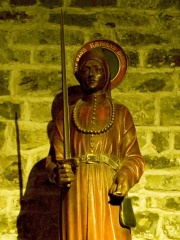
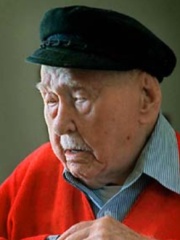
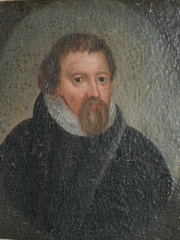
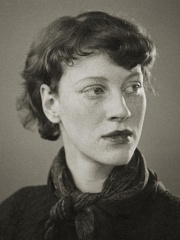
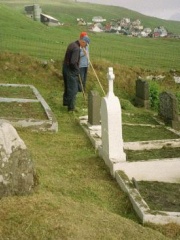
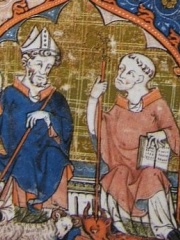
The Most Famous
RELIGIOUS FIGURES from Denmark
This page contains a list of the greatest Danish Religious Figures. The pantheon dataset contains 3,187 Religious Figures, 7 of which were born in Denmark. This makes Denmark the birth place of the 50th most number of Religious Figures behind Algeria, and Vietnam.
Top 7
The following people are considered by Pantheon to be the most legendary Danish Religious Figures of all time. This list of famous Danish Religious Figures is sorted by HPI (Historical Popularity Index), a metric that aggregates information on a biography's online popularity.

1. Charles I, Count of Flanders (1083 - 1127)
With an HPI of 69.55, Charles I, Count of Flanders is the most famous Danish Religious Figure. His biography has been translated into 27 different languages on wikipedia.
Charles the Good (1084 – 2 March 1127) was Count of Flanders from 1119 to 1127. His murder and its aftermath were chronicled by Galbert of Bruges. He was beatified by Pope Leo XIII in 1882 through cultus confirmation.

2. Christian Mortensen (1882 - 1998)
With an HPI of 62.51, Christian Mortensen is the 2nd most famous Danish Religious Figure. His biography has been translated into 24 different languages.
Thomas Peter Thorvald Kristian Ferdinand Mortensen (August 16, 1882 – April 25, 1998), known as Christian Mortensen, was a Danish-American supercentenarian who resided in California. When he died, his age of 115 years and 252 days was the longest verified male lifespan at the time, until Jiroemon Kimura surpassed him in 2012. Mortensen was baptized in Fruering Church on December 26, 1882. Besides his baptismal record, other records include the 1890 and 1901 census enumerations in Denmark, and church confirmation in 1896.

3. Hans Tausen (1494 - 1561)
With an HPI of 61.20, Hans Tausen is the 3rd most famous Danish Religious Figure. His biography has been translated into 23 different languages.
Hans Tausen (Tavsen) (1494 – 11 November 1561) nicknamed the “Danish Luther” was the leading Lutheran theologian of the Danish Reformation in Denmark. He served as Bishop of Ribe and published the first translation of the Pentateuch into Danish in 1535.

4. Ingrid Vang Nyman (1916 - 1959)
With an HPI of 59.85, Ingrid Vang Nyman is the 4th most famous Danish Religious Figure. Her biography has been translated into 16 different languages.
Ingrid Vang Nyman (21 August 1916 – 13 December 1959) was a Danish illustrator noted for her work on the Pippi Longstocking books of which she was the original illustrator. She also adapted the stories into a comic book. Despite the worldwide fame of her Pippi illustrations, Vang Nyman did not receive as much recognition from the publication as author Astrid Lindgren, and remains fairly unknown.
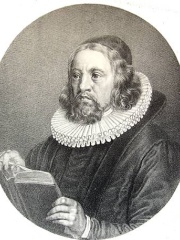
5. Thomas Kingo (1634 - 1703)
With an HPI of 57.94, Thomas Kingo is the 5th most famous Danish Religious Figure. His biography has been translated into 18 different languages.
Thomas Hansen Kingo (15 December 1634 – 14 October 1703) was a Danish bishop, poet and hymnwriter born in Slangerup, near Copenhagen. His work marked the high point of Danish baroque poetry.

6. Sigmundur Brestisson (961 - 1005)
With an HPI of 57.50, Sigmundur Brestisson is the 6th most famous Danish Religious Figure. His biography has been translated into 19 different languages.
Sigmundur Brestisson (961–1005) was a Faroese Viking chieftain, and was responsible for introducing Christianity to the Faroe Islands in 999, according to the Færeyinga saga. He is one of the main characters of the Færeyinga saga. According to the Færeyinga saga, emigrants who left Norway to escape the tyranny of Harald I of Norway, settled in the islands about the beginning of the 9th century. Early in the 11th century, Sigmundur, whose family had flourished in the southern islands but had been almost exterminated by invaders from the north, was sent back to the Faroe Islands, whence he had escaped, to take possession of the islands for Olaf Tryggvason, king of Norway. Sigmundur was the first Faroe Islander to convert to the Christian faith, bringing Christianity to the Faroes at the decree of Olaf Tryggvason. Initially Sigmundur sought to convert the islanders by reading the decree to the Alting in Tórshavn, but was nearly killed by the resulting angry mob. He then changed his tactics, went with armed men to the residence of the chieftain Tróndur í Gøtu and broke in his house by night. He offered him the choice between accepting Christianity or face beheading; he chose the former. Later, in 1005, Tróndur í Gøtu attacked Sigmundur by night at his yard in Skúvoy, whereupon he fled by swimming to Sandvík on Suðuroy. He reached land in Sigmundargjógv in Sandvík, but a farmer in the village killed the exhausted Sigmundur, and stole his precious golden arm ring. According to tradition, his gravestone is located in the so-called Sigmundarsteinur in Skúvoy. It bears a carved cross and was part of the old church.

7. Oswald of Worcester (1000 - 992)
With an HPI of 55.26, Oswald of Worcester is the 7th most famous Danish Religious Figure. His biography has been translated into 15 different languages.
Oswald of Worcester (died 29 February 992) was Archbishop of York from 972 to his death in 992. He was of Danish ancestry, but brought up by his uncle, Oda of Canterbury, who sent him to France to the abbey of Fleury to become a monk. After a number of years at Fleury, Oswald returned to England at the request of his uncle, who died before Oswald returned. With his uncle's death, Oswald needed a patron and turned to another kinsman, Oskytel, who had recently become Archbishop of York. His activity for Oskytel attracted the notice of Archbishop Dunstan, who had Oswald consecrated as Bishop of Worcester in 961. In 972, Oswald was promoted to the see of York, although he continued to hold Worcester also. As bishop and archbishop, Oswald was a supporter and one of the leading promoters (together with Æthelwold) of Dunstan's reforms of the church, including monastic reforms. Oswald founded a number of monasteries, including Ramsey Abbey, and reformed another seven, including Winchcombe in Gloucestershire and Pershore and Evesham in Worcestershire. Oswald also switched the cathedral chapter of Worcester from secular clergy to monks. While archbishop, he brought the scholar Abbo of Fleury to teach, and he spent two years in England, mostly at Ramsey. Oswald died in 992, while washing the feet of the poor. A hagiographical life was written shortly after his death, and he was quickly hailed as a saint.
People
Pantheon has 7 people classified as Danish religious figures born between 961 and 1916. Of these 7, none of them are still alive today. The most famous deceased Danish religious figures include Charles I, Count of Flanders, Christian Mortensen, and Hans Tausen.
Deceased Danish Religious Figures
Go to all RankingsCharles I, Count of Flanders
1083 - 1127
HPI: 69.55
Christian Mortensen
1882 - 1998
HPI: 62.51
Hans Tausen
1494 - 1561
HPI: 61.20
Ingrid Vang Nyman
1916 - 1959
HPI: 59.85
Thomas Kingo
1634 - 1703
HPI: 57.94
Sigmundur Brestisson
961 - 1005
HPI: 57.50
Oswald of Worcester
1000 - 992
HPI: 55.26

